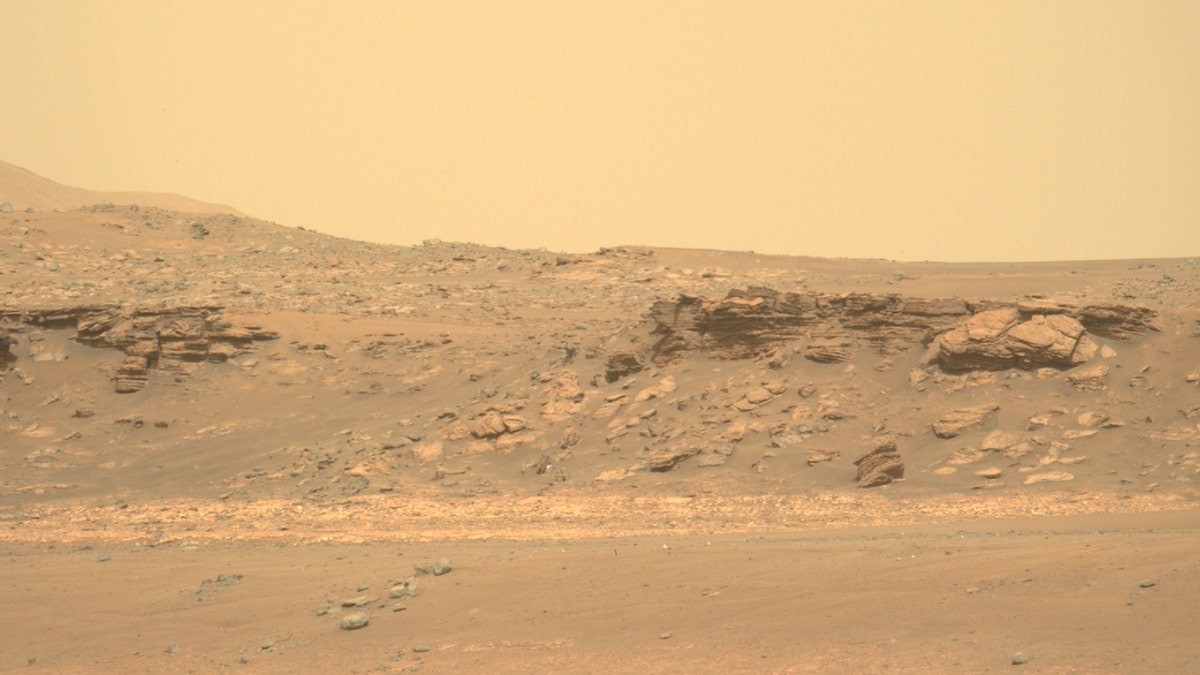NASA prepares to send 4 volunteers on a Mars mission, on Earth.
Four volunteers will live in NASA's Mars habitat for one year, helping the space center collect data for its first mission to the planet in outer space.
Scientists have reportedly not ruled out an extraterrestrial spacecraft to explain geographical anomalies recently discovered on Mars.
NASA's Curiosity Rover found bizarre rows of spikes, plates and wedges in the Gale Crater on Mars in April, according to the Telegraph.
Dr. Nathalie Cabrol, an astrobiologist who serves at NASA's Ames Research Center and Search for Extraterrestrial Intelligence Institute (SETI), described the finding as "the most bizarre rock" she had seen in her two decades of studying the red planet.
A research paper recently published by the Journal of Astrobiology surmised that the formations were "sand spikes," such as those that can be seen on Earth following massive earthquakes, but researchers also noted that "a fragment from an extraterrestrial or terrestrial spacecraft cannot be discounted with absolute certainty."
ALIEN LIFE POSSIBLY FOUND ON MARS IN 1970s, EX-NASA SCIENTIST SAYS

NASA's Curiosity Rover found bizarre rows of spikes, plates and wedges in the Gale Crater on Mars in April, according to the Telegraph. (NASA/GSFC)
Researchers also observed that portions of what look like wheels, an axle and a debris field were also seen in the crater, the Telegraph reported.
"One can only speculate about extraterrestrial origins," the researchers wrote in their paper, adding that the debris field could have decayed over time.
"There is no way of proving for certain what the spikes are, but the balance of the evidence would suggest ‘sand spikes’ resulting from seismic activity on Mars," Professor Richard Armstrong of Aston University in Birmingham, England, told the Telegraph.

A view of Mars from NASA's Mars InSight Lander. (NASA/Twitter)
"I suspect the enigmatic ‘wheels’ are a separate phenomenon. Mars images often show strange formations and features which ‘look like’ familiar objects," he added. "Any debris field on Mars would certainly suffer erosion over time, especially from wind."
NASA'S NEXT MARS MISSION WILL LOOK FOR SIGNS OF ALIEN LIFE

NASA's Mars Perseverance Rover acquired this image using its left Mastcam-Z camera – Mastcam-Z is a pair of cameras located high on the rover's mast – on April 16, 2022. (NASA/JPL-Caltech/ASU)
At least 10 human spacecraft have crashed or been lost on Mars, according the Telegraph.
NASA's Curiosity Rover has suffered damage as it has explored the planet, and experts claim there are approximately 15,694 pounds of human-caused debris on its surface.
